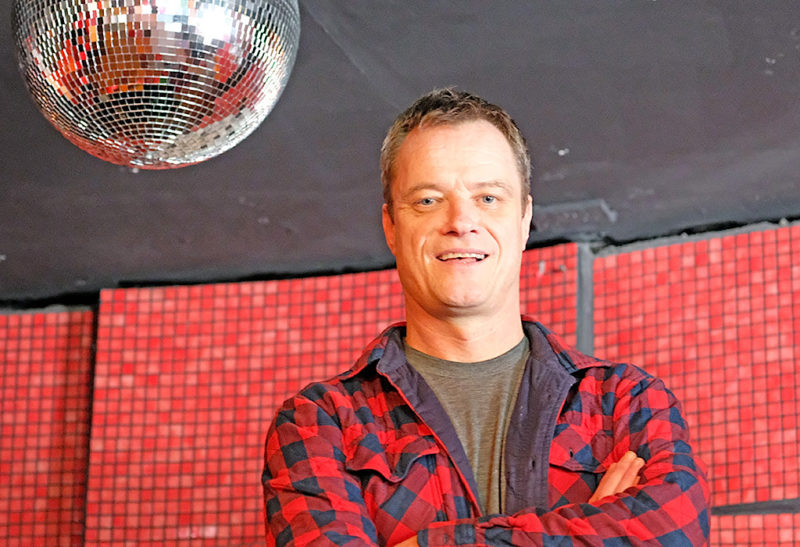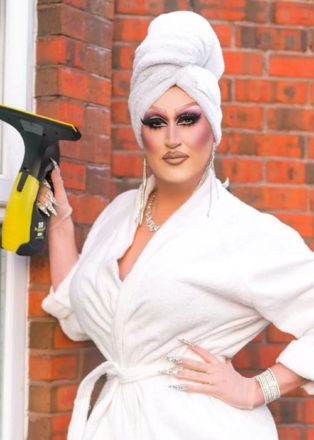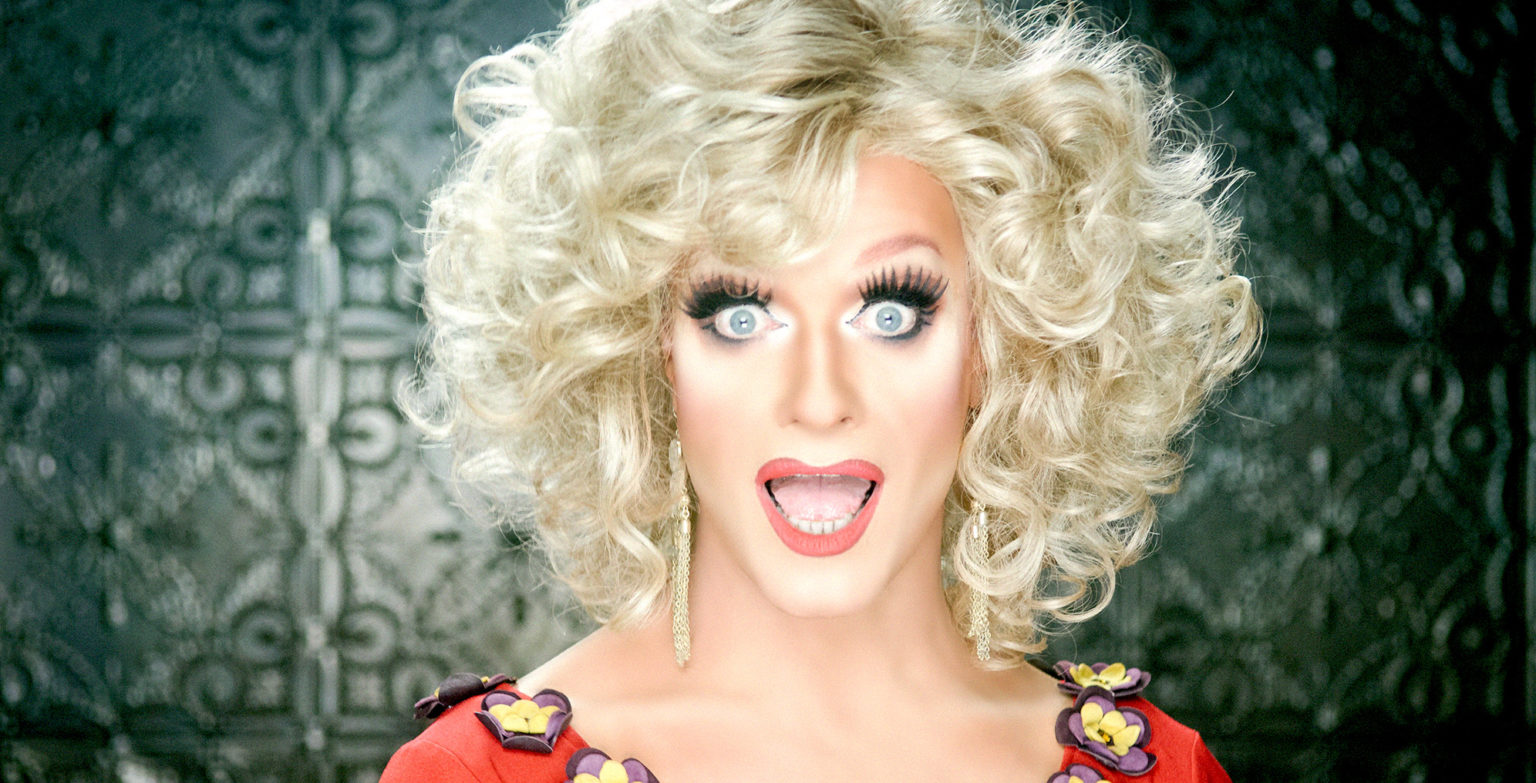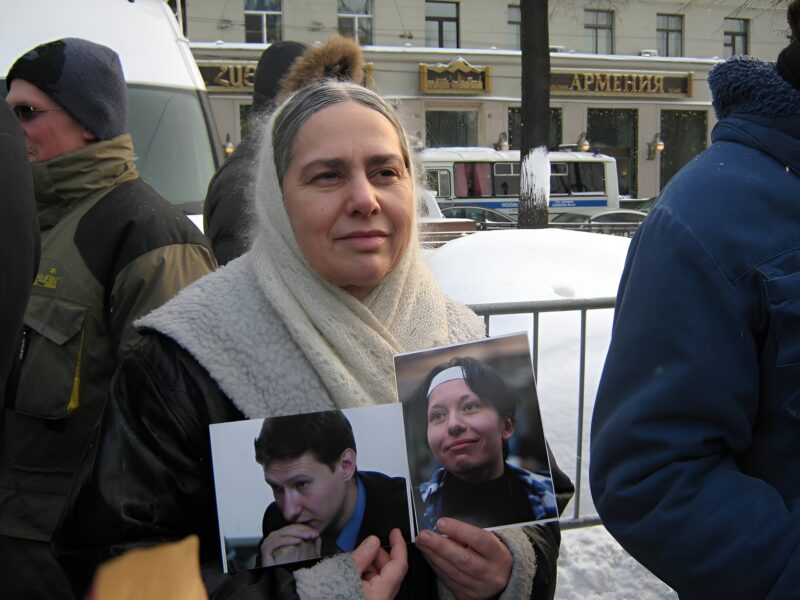Panti Bliss in her golden dress and even more golden hair is like a cake with loads of sparkling candles: she attracts everyone’s attention. The “Queen of Ireland” is actually called Rory O‘Neill, 51, and simply tries to smile away homophobic prejudices and accusations of being misogynistic.
By Mareike Graepel, Dublin
A half-full milk carton thrown at his head by a group of young men from a moving car at a pedestrian crossing recently got Rory O’Neill thinking again. “What exactly was I doing at that moment and how am I behaving that I unknowingly let them know I was gay? That they thought they could shout at me and call me a ’faggot’?“
The Irishman is almost two metres tall, has a broad back, striking facial features and looks more like a superhero in civilian clothes than his glamorous alter ego with the reddest lips and longest eyelashes. And yet it was his drag queen persona “Panti” – short for “Miss Pandora Panti Bliss” – who became the frontwoman of the referendum campaign when same-sex marriage was up for debate in Ireland. And it was Panti who was the first to congratulate a lesbian couple when the overwhelming majority was announced.
It was also Panti Bliss with her clear words on the homophobic attitude of several public service journalists, started a case that became known as “Pantigate” in 2014 and even brought it to the attention of the European Parliament: the television station RTÉ quickly deleted Panti’s criticism of homophobia in the Irish media from its online archives and paid the journalists mentioned by the drag queen 85,000 Euro in compensation. In Brussels, MEP Paul Murphy called this “a real attack on freedom of speech and freedom of the press” in Ireland.
It wasn’t Rory O’Neill’s, but Panti Bliss’ video that was viewed a million times on YouTube following her celebrated “Noble Call” speech at the Abbey Theatre in Dublin. It was Panti who was celebrated for this speech by the British drag star RuPaul, the actor Graham Norton, the singer Madonna and the Pet Shop Boys. T-shirts with the “I’m on Team Panti” print were sold for a charity campaign – raising more than 10,000 Euro.
Is Rory Panti? Or is Panti Rory? “That’s hard to say,” smiles the man who is famous in drag, who runs a gay bar – currently closed due to the pandemic – with its own pale ale beer and performs there in high heels, who fights for equal rights for all sexual orientations in flowing blonde wigs, who hosts a radio show in a wasp-waisted corset, who presented the “Alternative Miss Ireland” beauty pageant for 16 years and who regularly organises the Dublin Pride celebrations.
His master’s thesis at the Art College in Dún Laoghaire in County Dublin was the concept for a drag show – including a stage set model, with illustrations, posters and projections. That was 22 years ago. For the presentation, Rory dressed as Panti Bliss for the first time: “The show was terribly silly.” But a manager of one of the gay bars in Dublin, which were often still hidden away in basements at the time, saw the show and offered him 50 Irish pounds per evening. Would he like to dress up as Panti and become the “heart and life of the party” in his nightclub and entertain the crowd?
“I’ve been Panti since 1998. Her story is mine and my story is hers, but Panti takes everything with much more humour. Basically, I don’t make any difference. With one exception: I don’t get itchy when someone without a costume calls me Panti, but when I’ve worked hard for three hours to become Panti, I get annoyed when someone calls me ’Rory’.“ The effort is too great not to demand acceptance and respect for the character. “I still enjoy the transformation, but it gets more tiring over the years. As soon as I’m Panti, there’s no more ‘on stage’ or ‘off stage’ – then I do every step as if I were on stage.”

When British former Olympic swimmer Sharron Davies took to Twitter to rant about drag queens as parodies of women, Panti Bliss and her colleagues had to deal with the discussion of whether drag queens make fun of women. A bizarre topic, says the 51-year-old. “I’m a gay man and I’ve been very lucky to feel comfortable with my sexuality. I don’t pretend to be a woman, but I enjoy dressing like a woman. That’s the best thing about the whole drag concept: gender doesn’t matter.” There are women who perform as drag queens. And there are women who are drag queens – they are called bio or faux queens.
“Most queer kids have a terribly difficult adolescence – even more so in the past than today – but it’s still not easy and uncomplicated. I’ve always felt more comfortable around women than around straight men.” Since the invention of Panti Bliss, Rory O’Neill has been celebrating the woman herself in “drag” – which is said to have meant “dressed as a girl” back in Shakespeare’s day, but may also come from the word for “drag”. “I take the image of a woman as a panti and make her even bigger, even more feminine, even more beautiful, even stronger.”
Rory O’Neill is not alone in this opinion. Phillip Keogh, better known in Ireland as “Victoria Secret”, says: “Our life as drag queens is a love letter to women.” The 36-year-old went to an all-boys school, but always wanted to be around women, so “I was always more a part of it”. He had his make-up done by a friend for the first time when he was 19 and says: “I still find it difficult to do my make-up well, but it’s part of me and my job.” Just like wearing a bra – a daily challenge. “I think every man should have done it once a day to learn what it means.”
Drag queens can better understand many of the issues that women face. “I now know why women can’t just walk a few hundred metres over cobblestones to the disco entrance in high heels. Because Panti feels the same way,” explains Rory O’Neill. Not to mention the elaborate styling. “Panti isn’t a lie, she’s a ‘fun version’ of myself who is allowed to do things that society otherwise rejects in men: Panti is allowed to wear pink and be bitchy.” The fact that Panti is “allowed” to do this and Rory isn’t says more about society than it does about the drag queen.

Small town in the west of Ireland celebrates its queen
Rory O’Neill lives in Dublin, has lived in Asia and the UK, and grew up in Ireland at a time when homosexuality was barely visible. “I wasn’t bullied much, perhaps because I seemed so big and strong.” He comes from a small town in the west of Ireland. There were no role models there, no other gay men. “I couldn’t have learnt anything if I’d wanted to. It’s not something I picked up,” he says, placing his large hands gracefully on the table and looking at his crossed legs with amusement.
“When I’m Rory, my movements look feminine. I can’t help it. And that was and is interpreted by some people as weakness. When I’m Panti, she can do it all without anyone finding it unusual.” Becoming a female figure makes Ireland’s most famous drag artist more confident and unassailable. “Nobody throws a milk carton at Panti’s head. I feel safer as Panti than as Rory. She is celebrated by passers-by and the public.” Even in Rory O’Neill’s home town.
For the TV documentary “The Queen of Ireland”, he is accompanied to the rural west of Ireland, transforming into a woman, walking the streets, flanked by his father, the local vet, and his mother, the housewife. His parents protectively hold the umbrella over his wig and take Panti’s hand when the path becomes too uneven for the high heels. When Panti takes to the stage in the village of Ballinrobe, with almost all of the less than 4,000 inhabitants sitting on the chairs in the large marquee, the camera captures just how nervous the drag queen is for a moment.

Rory O’Neill remembers: “That was a big deal for me. All the people from my childhood and youth were there, my primary school teachers, our neighbours, everyone.” The film shows in close-up that the audience is also insecure – until Panti lashes out with her lipstick-red big mouth and basically emotionally strips herself naked. Ballinrobe celebrates its queen, its “Queen”. But the applause is not just for the drag queen, but also for the Irish themselves.
“People are beginning to realise that if they like someone, they should do so regardless of their gender and sexual interests,” says Rory O’Neill. The best example of more acceptance: the visit by young people from Ballinrobe in front of the “Pantibar” at a Dublin Pride parade last year. “I thought there were only two of them when the two guys were standing there – but they had a whole busload of LGBTQI+ young people from my village in tow. Now there’s even a group that meets regularly in the public library there. Incredibly beautiful.”
However, interaction and socialising is also currently on hold in Ireland, as all bars and restaurants that do not serve food are still closed due to Covid-19. All drag queens in Ireland are currently having to break new ground due to the pandemic – performing digitally and organising alternative Eurovision contests online. Phillip Keogh aka “Victoria Secret” organises “Dragged Up”, a series of events where drag stars perform. He says: “Being a drag queen is very hard work that is often underestimated. We are our own stylists, accountants, managers, presenters, writers. And at the moment, we’re all unsure of what the future holds for our industry.”
In the pre-coronavirus documentary “Dragumentary” by director Sadhbh Murphy, the Irish drag scene is still described as vibrant and full of ethos and talent. “Victoria Secret” sighs: “That doesn’t change in lockdown, but we all have to find new ways. Drag is, of course, inextricably linked to performance and can’t be sustained forever without a stage – and as soon as we can, we want to perform again!“











